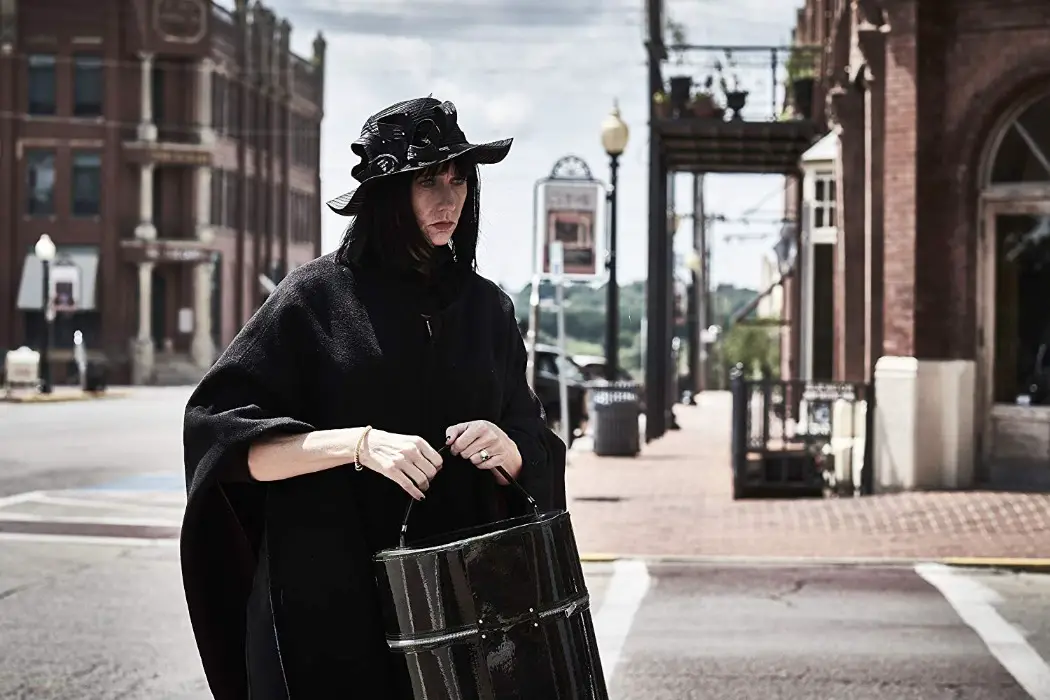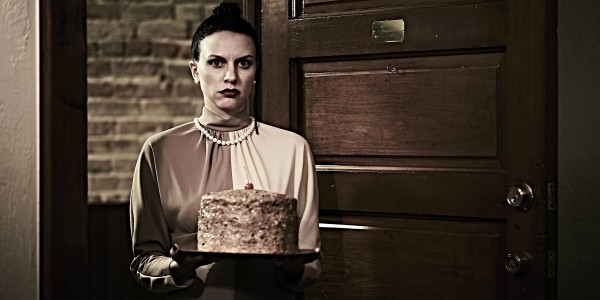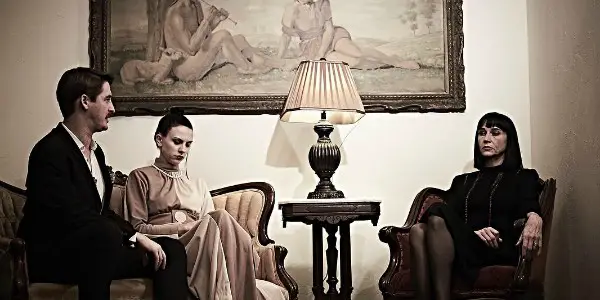STRIKE, DEAR MISTRESS, AND CURE HIS HEART: A Surreal Character Study Overpowered By Narration

Amanda Mazzillo is a writer with an MFA in Dramatic…
Mickey Reece’s Strike, Dear Mistress, and Cure His Heart follows Madeline (Audrey Wagner) and David Middleston (Jacob Snovel), a newlywed couple who are getting used to both married life and the hotel they recently purchased.
As the two begin getting the hotel ready for business, Madeline’s mother Dianne (Mary Buss) comes to stay with them. Madeline’s sister Bailey (Elise Langer) is already living with them, which pushes Dianne into confronting her past and her relationships with both her daughters.
Overpowering Narration
Strike, Dear Mistress, and Cure His Heart has an interesting story told mostly through conversations between its characters, but the overuse of narration becomes distracting. What starts as a simple way to introduce us to characters and bring forth the 1970s thriller tone of the film quickly falls into something closer to a reading of a short story set to images.
I can see how the narration could work well, but there were moments where it takes away from the strength of the performances. There were multiple moments where Audrey Wagner portrays her character so well, but the narration saying the feelings that we can already get from Wagner’s performance is distracting and distances from the actual strength of her performance.

Hearing the narration telling us the inner thoughts and personality of the characters upon introduction felt like the film wanted to tell us all this important information and depth to these characters without showing us. The performances all could have gotten across what the narrations were saying, but at times, the actors are just not given the change because a narration is already telling us how they are feeling during a scene.
I can see how this might have a literary influence, but even in literature, we should be shown more rather than given a list of adjectives that you want us to think about when a character comes on screen. Strike, Dear Mistress, and Cure His Heart has potential if there was more faith in the actors as well as in the audience’s ability to understand expressions and scenarios without having narrative descriptions telling us what the scene should convey.
The use of dialogue tags through narration is interesting, and unexpected. This use of narration is jarring but does help set the tone of the film. This is probably the point where the narration is both the most overpowering, but also adds a unique quality to the film. I would have enjoyed this moment more if the scene was not peppered with narration leading up to the conversation. If the only narration we heard in this scene were the dialogue tags spliced between the conversation, it could have worked better, and showcased the performances while still adding a little bit of a literary tone to the scene.
A Well-Paced Mixture of Surrealism and the Horrors of Family
The pace of Strike, Dear Mistress, and Cure His Heart works very well for the film. I liked how the film mostly focuses on rather simple conversations between characters, while giving us moments of surrealism similar to David Lynch and Guy Maddin films, before landing firmly back into the hotel for another moment of tense conversation punctuated by memorable deliveries from its entire cast, especially Jacob Snovel. His delivery brings a musicality to the film, adding a unique type of tension to the conversations between David and every other character with which he interacts.

The slower pace helps Strike, Dear Mistress, and Cure His Heart get the most out of its story without relying on massive horror set pieces or moments of gore. Having one scene firmly landing the film in the horror genre gives a surreal feeling of horror without pushing too far away from the inner struggles of its main characters.
The film captures the aesthetic and tone of 1970s thrillers, yet its pacing reminds me of one of my favorite horror films in recent years, The House of the Devil. Both films utilize quiet moments and tense conversations over in-your-face moments of horror. Strike, Dear Mistress, and Cure His Heart utilizes its slow burn pace well, while adding elements of surrealism and creates a time capsule effect while still remaining set in a modern time, or a surreal mixture of our modern world and a world of the past.
Conclusion: Strike, Dear Mistress, And Cure His Heart
Strike, Dear Mistress, and Cure His Heart is overpowering at times with its use of narration, but manages to capture the tension and horror of dysfunctional relationships until it explodes with a memorable and captivating ending. The pacing helped create a memorable film filled with both surreal and tense moments as well as comedic moments. Jacob Snovel, Audrey Wagner, and Mary Buss all gave strong performances, and worked well together.
Have you seen other Mickey Reece films. If so, do you enjoy the unique style of his films? Answer in the comments!
https://youtu.be/bdHmscx_4sk
Does content like this matter to you?
Become a Member and support film journalism. Unlock access to all of Film Inquiry`s great articles. Join a community of like-minded readers who are passionate about cinema - get access to our private members Network, give back to independent filmmakers, and more.
Amanda Mazzillo is a writer with an MFA in Dramatic Writing from SCAD and a BA in Writing & Linguistics and Film Studies minor from Georgia Southern University. She enjoys writing comedy and exploring all forms of media. Her Twitter name is a bad pun: @mazzillofirefox













